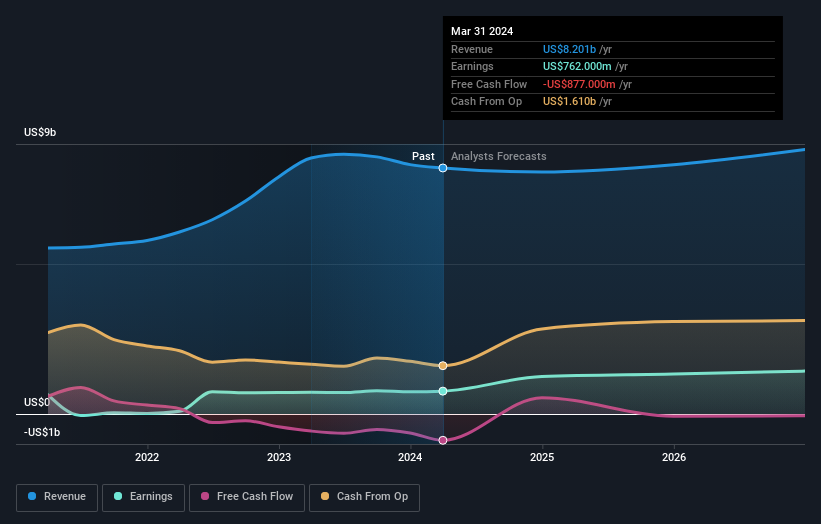Is PPL Corporation (NYSE:PPL) Potentially Undervalued?
Today we're going to take a look at the well-established PPL Corporation (NYSE:PPL). The company's stock saw a double-digit share price rise of over 10% in the past couple of months on the NYSE. The company is now trading at yearly-high levels following the recent surge in its share price. As a large-cap stock with high coverage by analysts, you could assume any recent changes in the company’s outlook is already priced into the stock. However, could the stock still be trading at a relatively cheap price? Let’s examine PPL’s valuation and outlook in more detail to determine if there’s still a bargain opportunity.
See our latest analysis for PPL
What Is PPL Worth?
According to our price multiple model, where we compare the company's price-to-earnings ratio to the industry average, the stock currently looks expensive. We’ve used the price-to-earnings ratio in this instance because there’s not enough visibility to forecast its cash flows. The stock’s ratio of 28.39x is currently well-above the industry average of 17.48x, meaning that it is trading at a more expensive price relative to its peers. Furthermore, PPL’s share price also seems relatively stable compared to the rest of the market, as indicated by its low beta. If you believe the share price should eventually reach levels around its industry peers, a low beta could suggest it is unlikely to rapidly do so anytime soon, and once it’s there, it may be hard to fall back down into an attractive buying range.
What kind of growth will PPL generate?
Future outlook is an important aspect when you’re looking at buying a stock, especially if you are an investor looking for growth in your portfolio. Buying a great company with a robust outlook at a cheap price is always a good investment, so let’s also take a look at the company's future expectations. PPL's earnings over the next few years are expected to increase by 92%, indicating a highly optimistic future ahead. This should lead to more robust cash flows, feeding into a higher share value.
What This Means For You
Are you a shareholder? It seems like the market has well and truly priced in PPL’s positive outlook, with shares trading above industry price multiples. However, this brings up another question – is now the right time to sell? If you believe PPL should trade below its current price, selling high and buying it back up again when its price falls towards the industry PE ratio can be profitable. But before you make this decision, take a look at whether its fundamentals have changed.
Are you a potential investor? If you’ve been keeping an eye on PPL for a while, now may not be the best time to enter into the stock. The price has surpassed its industry peers, which means it is likely that there is no more upside from mispricing. However, the optimistic prospect is encouraging for PPL, which means it’s worth diving deeper into other factors in order to take advantage of the next price drop.
So if you'd like to dive deeper into this stock, it's crucial to consider any risks it's facing. Every company has risks, and we've spotted 3 warning signs for PPL (of which 2 don't sit too well with us!) you should know about.
If you are no longer interested in PPL, you can use our free platform to see our list of over 50 other stocks with a high growth potential.
Have feedback on this article? Concerned about the content? Get in touch with us directly. Alternatively, email editorial-team (at) simplywallst.com.
This article by Simply Wall St is general in nature. We provide commentary based on historical data and analyst forecasts only using an unbiased methodology and our articles are not intended to be financial advice. It does not constitute a recommendation to buy or sell any stock, and does not take account of your objectives, or your financial situation. We aim to bring you long-term focused analysis driven by fundamental data. Note that our analysis may not factor in the latest price-sensitive company announcements or qualitative material. Simply Wall St has no position in any stocks mentioned.

 Yahoo Finance
Yahoo Finance 
